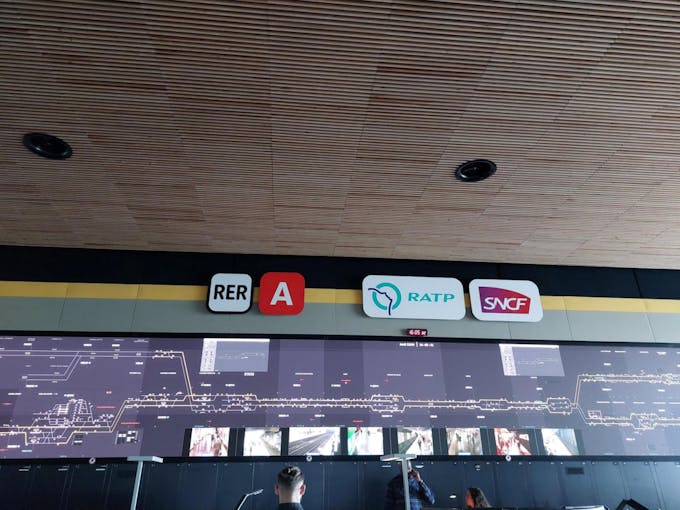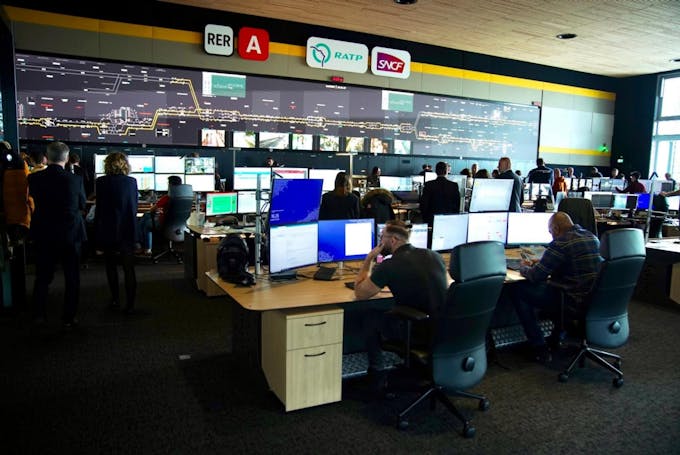A new single command centre for the RER A? Good news for travelers

Behind the trains that follow one another and the mechanical doors that open and close at the edge of the platforms, hides a large orchestra. Professionals and technological tools, who, every day, ensure the proper functioning of the network to ensure safety and comfort for all passengers.
A team effort that mixes field agents and the shadowy jobs of the "command centers", behind the scenes from which the operation of public transport in the Ile-de-France region is orchestrated.
But what is a single command center?
A single command center (or CCU) is a place that brings together all the actors in charge of the operation of the same line, in the same place.
RER A, a line operated by several players
In the case of the RER A, this takes place in Vincennes with the Transilien SNCF Voyageurs, SNCF Réseau and RATP teams who share the operation of the line.
Transilien SNCF Voyageurs and SNCF Réseau operate the Cergy-le-Haut and Clichy branches, while the rest of the RER A line is operated by RATP.
A particular situation, which led, in 2019, to the creation of the Single Command Center (CCU) of the RER A in Vincennes.
What is the purpose of a single command center?
- To bring together all those who operate a line in one place and one control tower.
- Improve communication between teams to improve the overall operation of the line and limit the impact of incidents on traffic.
- Guarantee clear and real-time passenger information.
The single command centre of the RER A is getting a makeover in January 2024
Why modernize the single command center in Vincennes?
On January 28, 2024, the single command center of the RER A was given a facelift after several months of work financed 100% by Île-de-France Mobilités.
Real-time information on the Île-de-France Mobilités application, new billboards on the metro and RER A and B platforms... The modernisation of the single command centre of the RER A is only the logical continuation of an ambitious investment policy to improve the passenger experience and information in transport in the Île-de-France region.
RER A, the busiest line in Europe
A strategic and very busy line with 1.4 million daily passengers, the RER A has positive and constantly changing punctuality figures (95% punctuality in February 2024 and 11 points to gain between 2025 and today).
To maintain the quality of service and improve the passenger experience a little more, new, more efficient tools have been put in place.
Modernisation of the single command centre of the RER A, what are the new features?
- Tool for visualising the flow between the different trains and the available drivers, as well as the visualisation of trains in circulation and parked to plan the operation of the line.
- Implementation of a communication tool between the various managers responsible for operating the line (station master, head of dispatch, switchmen, maintenance team, etc.) to improve responsiveness in the event of incidents and limit disruption time.
- Modernisation of the common work room towards greater ergonomics, with the aim of improving operator comfort and meeting the challenges of shared operation of the line.
- Improved management thanks to new tools for regulating and managing traffic and incidents.
- Optimize operations with a new On-Board Operations Support System (SAE+) that improves traffic flow with information shared live between trains and the command center.
- Improve communication with passengers thanks to the migration of the Transilien SNCF Voyageurs teams, dedicated to traffic information, who are leaving the premises in Asnières-sur-Seine for the Vincennes CCU.
- Construction of a new 18-metre-high LED wall common to the teams to view the entire line and associated information (work area, performance, etc.) in one place and to promote the circulation of information.

Will there soon be a single command centre for the RER B and RER D?
A 14-stage investment plan has been voted to improve the performance of the RER B. A plan, which includes the establishment of a Single Command Centre at the Plaine Saint-Denis common to the RER B and D lines and which will be financed by Île-de-France Mobilités by 2030.